How to look at art and understand what you see
Understanding different types of art involves familiarizing yourself with various art movements, styles, techniques, and mediums.
By engaging with art in these ways, you can develop a deeper understanding and appreciation of the diverse forms, styles, and techniques that artists employ to express themselves and communicate ideas.
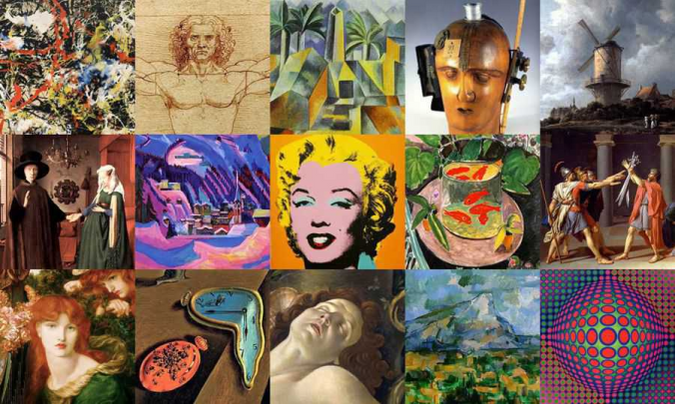
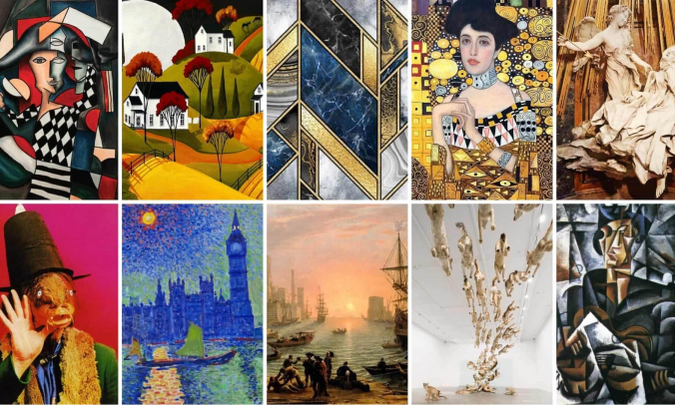
Art movements
Art movements are periods in art history characterized by a particular style, ideology, or approach to creating art. Examples include:
- Modern art (1860s - 1970s): This era marked a departure from traditional styles, embracing experimentation and new perspectives. Modern artists focused on abstract forms and the changing nature of light, paving the way for contemporary art.
- Cubism (Early 20th century): Pioneered by Picasso and Braque, Cubism revolutionized painting by breaking down subjects into geometric shapes and viewing them from multiple angles simultaneously.
- Impressionism (19th century): This movement captured fleeting moments and the effects of light on everyday subjects. Impressionist painters used small, visible brushstrokes and open compositions.
- Surrealism(Post - World War I): Surrealists sought to unlock the unconscious mind through illogical, dreamlike imagery.They explored the realm of dreams and the irrational, challenging conventional perceptions.
- Contemporary art(Mid - 20th century - Present): Reflecting a globalized and technologically advanced world, contemporary art encompasses a wide range of materials, methods, and themes.It engages with cultural dialogues and addresses complex issues.
- Abstract expressionism(1940s - 1950s): This American movement emphasized spontaneous gestures and emotional expression.Artists like Pollock and de Kooning created large - scale abstract works with bold colors and textures.
- Pop art(1950s - 1960s): Pop artists incorporated imagery from popular culture, such as advertising and comics, into their works.They challenged traditional notions of high art and embraced mass - produced imagery.
- Expressionism(Early 20th century): Expressionist artists prioritized emotional experience over objective reality.They used distorted forms and intense colors to convey inner feelings and anxieties.
- Fauvism(Early 20th century): Fauvist painters, like Matisse and Derain, used vibrant colors and bold brushstrokes to create expressive and non - naturalistic depictions of the world.
- Art Nouveau(Late 19th - Early 20th century): This decorative style featured flowing lines, organic forms, and floral motifs.It was inspired by nature and found expression in architecture, furniture, and graphic design.
- Realism(19th century): Realist artists sought to depict everyday life and ordinary people with accuracy and objectivity.They rejected idealized portrayals and focused on social and political issues.
- Post - Impressionism(Late 19th century): This diverse movement included artists like van Gogh, Cézanne, and Gauguin.They experimented with color, form, and symbolic content, building upon but diverging from Impressionism.
- Conceptual art(1960s - 1970s): Conceptual artists prioritized ideas over the physical art object.They used language, performance, and documentation to explore philosophical and social concepts.
- Neoclassicism(18th - 19th century): Inspired by ancient Greek and Roman art, Neoclassical artists sought to convey order, reason, and moral values through their works.They emphasized clarity, balance, and idealized forms.
- Baroque(17th - 18th century): Baroque art was characterized by dramatic contrasts of light and shadow, elaborate ornamentation, and emotional intensity.It often depicted religious or mythological themes.
- Suprematism(Early 20th century): Founded by Malevich, Suprematism aimed to express pure artistic feeling through geometric abstraction.Its iconic works feature simple shapes like squares and circles on white backgrounds.
- Rococo(18th century): This decorative style was known for its lightheartedness, pastel colors, and playful themes.Rococo art often depicted scenes of love, leisure, and aristocratic life.
- Land art(1960s - 1970s): Land artists created works using natural materials and landscapes, often on a large scale.They sought to connect art with the environment and explore the relationship between humans and nature.
- Performance art(20th century - Present): Performance artists use their bodies and actions as the medium for their art.They often challenge traditional notions of art and engage with social and political issues.
- Op art(1960s): Op artists created optical illusions through geometric patterns and contrasting colors.Their works often appear to vibrate or move, playing with visual perception.
- Neo - Impressionism(Late 19th century): Building on Impressionism, Neo - Impressionist artists like Seurat and Signac used pointillism, a technique of applying small dots of color to create a vibrant image.
- Russian avant - garde(Early 20th century): This broad movement encompassed various styles, including Suprematism and Constructivism.Russian avant - garde artists sought to create a new art for a new society after the Russian Revolution.
- Precisionism(1920s - 1930s): American Precisionist painters focused on industrial subjects, depicting factories, bridges, and urban landscapes with sharp lines and geometric forms.
- Mannerism(16th century): Mannerist artists exaggerated proportions, elongated figures, and employed complex compositions.Their works often had a sense of artificiality and elegance.
- High Renaissance(Late 15th - Early 16th century): This period saw the peak of Renaissance art in Italy, with masters like Leonardo, Michelangelo, and Raphael.Their works showcased idealized forms, balanced compositions, and mastery of perspective.
- Photorealism(1960s - 1970s): Photorealist painters aimed to create incredibly detailed and realistic paintings based on photographs.Their works often depicted everyday scenes and objects with astonishing accuracy.
- Baroque painting(17th - 18th century): Baroque painting was characterized by dramatic lighting, rich colors, and emotional intensity.Artists like Caravaggio and Rembrandt created powerful religious and mythological scenes.
- Neo - expressionism(1970s - 1980s): This international movement saw a return to expressive figuration after the dominance of abstract art.Neo - expressionist artists used bold colors and raw brushstrokes to convey emotional intensity.
- Figurative art(Various periods): This broad term encompasses any art that depicts the human form or other recognizable objects.It includes a wide range of styles and approaches throughout art history.
- Arte Povera(1960s - 1970s): Italian Arte Povera artists used "poor" or everyday materials like dirt, rocks, and rags to create sculptures and installations.They challenged traditional notions of art and value.
- Academic art(19th century): This style of art was taught in European academies and emphasized technical skill, historical accuracy, and idealized forms.It often depicted classical or mythological subjects.
- Japanese art(Various periods): Japanese art encompasses a rich and diverse tradition, including woodblock prints, calligraphy, sculpture, and ceramics.It is known for its elegant forms, subtle colors, and deep connection to nature.
- Naïve art(19th century - Present): Naïve art is created by self - taught artists who lack formal training.It is often characterized by a childlike simplicity, bright colors, and unconventional perspectives.
- Outsider art(20th century - Present): Outsider art is created by individuals outside the mainstream art world, often those with mental illness or disabilities.It is known for its raw emotional power and unique vision.
- Environmental art(1960s - Present): Environmental artists create works that interact with and respond to the natural world.Their works often address ecological concerns and seek to raise awareness about environmental issues.
- Ancient Greek art(8th - 4th centuries BC): Ancient Greek art is celebrated for its idealized sculptures, pottery, and architecture.It laid the foundation for Western artistic traditions and continues to inspire artists today.
- Social realism(20th century): Social realist artists depicted the struggles and realities of working - class people.They often had a political agenda and sought to expose social injustices.
- Classical Realism(20th century - Present): Classical Realism is a modern movement that emphasizes technical skill and traditional methods of painting and sculpture.Artists often draw inspiration from classical antiquity.
- Tonalism(Late 19th century): Tonalist painters created atmospheric landscapes with muted colors and a sense of mystery.They were influenced by Romanticism and sought to evoke mood and emotion.
- Hyperrealism(1960s - Present): Hyperrealist artists create highly detailed paintings and sculptures that are often indistinguishable from photographs.Their works push the boundaries of realism and challenge notions of perception.
- Byzantine art(4th - 15th centuries): Byzantine art, characterized by its religious iconography, mosaics, and illuminated manuscripts, flourished in the Eastern Roman Empire.It had a profound influence on medieval art.
- Romanesque art(11th - 12th centuries): Romanesque art, known for its rounded arches, thick walls, and religious themes, emerged in Europe following the decline of the Roman Empire.It paved the way for Gothic art.
Art styles
Different styles within art movements can vary widely and may overlap with each other. Some common styles include:
- Realism: This style seeks to accurately portray the world as it appears, often focusing on everyday subjects and events. Realist artists strive for detail and believability in their work.
- Abstract: This style departs from realistic representation, instead using shapes, colors, and forms to express emotions, ideas, or simply the beauty of the visual elements themselves.
- Expressionism: Artists in this style prioritize the conveyance of inner emotions and feelings over realistic depiction. They use bold colors, distorted forms, and vigorous brushstrokes to create impactful works.
- Minimalism: This style embraces simplicity and the use of minimal elements. Minimalist art often features geometric shapes, limited color palettes, and an emphasis on clean lines and uncluttered compositions.
- Pop Art: Drawing inspiration from popular culture and mass media, Pop Art often incorporates recognizable imagery from advertising, comics, and everyday objects. It celebrates the mundane and challenges traditional notions of high art.
- Surrealism: This style delves into the dreamlike and the unconscious mind. Surrealist artists create bizarre and often illogical scenes that defy rational explanation, inviting viewers to explore the depths of imagination.
- Impressionism: Capturing fleeting moments and the effects of light, Impressionist artists used short, visible brushstrokes and open compositions. Their focus was on capturing the sensory experience of the world around them.
- Cubism: This revolutionary style fractured and reassembled objects into geometric shapes, often presenting multiple viewpoints simultaneously. Cubist artists aimed to depict the essence of their subjects rather than their outward appearance.
- Symbolism: Symbolist artists believed that art should convey deeper meaning beyond the literal. They often used symbols, metaphors, and allusions to evoke emotions and explore spiritual and philosophical themes.
- Art Deco: This decorative style emerged in the 1920s and 1930s, characterized by geometric shapes, streamlined forms, and luxurious materials.
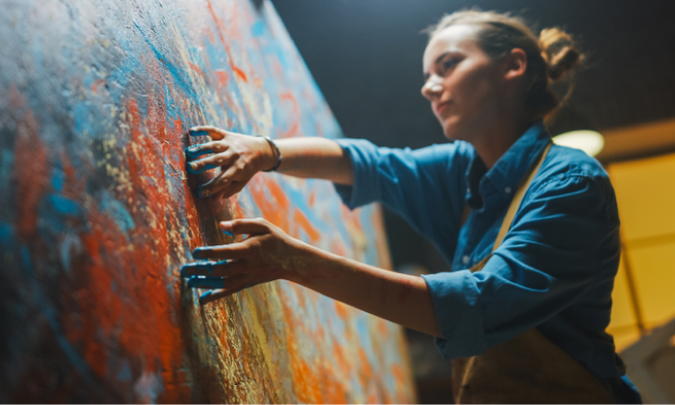
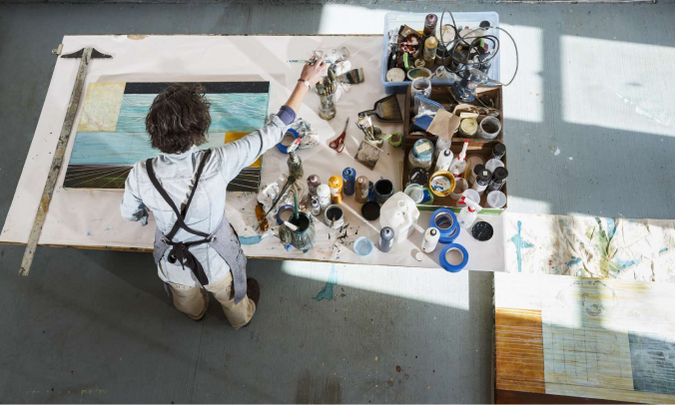
Art techniques
Artists employ various techniques to create their work, including:
- Painting: Painting is a versatile and expressive medium that allows artists to capture moments in time, emotions and ideas by applying colours to a variety of surfaces. From the delicate brushstrokes of watercolor to the thick impasto of oil paint, artists utilize different techniques to achieve diverse textures, colors and effects. The history of painting is rich and varied, spanning cultures and centuries and continues to evolve as artists explore new materials and technologies.
- Drawing: A fundamental art form using lines and marks to depict objects, figures or abstract concepts. Artists employ various tools like pencils, charcoal, ink and pastels on surfaces such as paper or canvas. Drawing can be both a preparatory stage for other works or a complete artwork in itself.
- Sculpture: The creation of three-dimensional artworks by shaping, carving, modelling, or assembling materials like clay, wood, metal, stone, or found objects. Sculptors explore form, texture, and space, often creating works that interact with the viewer and their environment.
- Printmaking: A process of creating multiple copies of an image through various techniques. Artists carve, etch, or draw onto a matrix (wood, metal, stone), which is then inked and pressed onto paper or another surface. Printmaking enables the reproduction of artworks, making them more accessible to a wider audience.
- Photography: The art of capturing images using a camera to record light onto light-sensitive materials or digital sensors. Photographers manipulate composition, exposure, and lighting to create visually compelling and meaningful images. Photography serves as both a form of artistic expression and a tool for documenting the world.
- Collage: The technique of assembling different materials, such as paper, fabric, photographs, and found objects, onto a surface. Collage artists explore texture, color, and juxtaposition to create unique and often surprising visual compositions.
- Mosaic: The creation of images or patterns by arranging small, colored pieces of glass, stone, or other materials onto a surface. Mosaics are often used to decorate walls, floors, or ceilings and can depict intricate scenes or geometric designs.
- Textile Arts: The use of fibers, yarn, fabric, and other textile materials to create artworks. Textile artists employ techniques like weaving, knitting, embroidery, and quilting to produce both functional and decorative objects.
- Digital Art: The creation of art using digital tools and software, including drawing tablets, graphic design programs, and 3D modeling software. Digital artists create a wide range of works, from illustrations and animations to virtual reality experiences.
- Mixed Media: The combination of various art techniques and materials within a single artwork. This approach allows for a wide range of creative expression, often resulting in layered and multi-dimensional pieces.
- Performance Art: Live actions or events presented as art. Performance artists use their bodies, voices, and the surrounding space to create temporary artworks that challenge traditional notions of art and engage the audience in a unique way.
- Installation Art: The creation of large-scale, site-specific artworks that transform a particular space. Installations can involve various materials and incorporate elements of sculpture, sound, light, and video, creating immersive environments for the viewer.
- Land Art: Creating artworks using natural materials found in the landscape, often on a large scale. Land artists manipulate the environment, creating temporary or permanent pieces that interact with and respond to the natural world.
- Graffiti: A form of street art created by painting or spraying images, words, or symbols onto public surfaces. Graffiti artists often work anonymously and their creations can range from simple tags to elaborate murals.
- Conceptual Art: Prioritizing the idea or concept behind an artwork over its physical form. Conceptual artists may use language, text, instructions, or actions to convey their ideas, challenging traditional notions of what constitutes art.
- Video Art: The use of video technology to create artworks. Video artists may use original footage, found footage, or a combination of both to explore a wide range of themes and concepts. Video art can be presented in galleries, museums, or online platforms.
Art mediums
Different mediums refer to the materials artists use to create their work. Some common mediums include:
- Oil paint: A versatile medium made from pigments mixed with oil, often linseed oil. It offers rich colors, slow drying time for blending and allows for a variety of techniques like glazing and impasto. Oil paint has been a popular choice for artists for centuries, renowned for its ability to create luminous and textured effects.
- Acrylic paint: A fast-drying, water-based paint made from pigments mixed with acrylic polymer. It's known for its versatility, allowing for thin washes or thick applications and can be used on various surfaces. Acrylic paints are a popular choice for both professional artists and hobbyists due to their ease of use and affordability.
- Watercolor: A transparent medium made from pigments mixed with water, often used on paper. Watercolor paintings are known for their luminous quality and ability to capture delicate details and washes of color. Watercolor's fluidity and transparency allow for unique effects like blending and layering.
- Tempera: An ancient medium made from pigments mixed with egg yolk, known for its durability and matte finish. It was widely used for panel paintings and frescoes before the advent of oil paint. Tempera paintings often have a rich, jewel-like quality due to the egg yolk binder.
- Gouache: An opaque watercolor paint made from pigments mixed with a binder and white pigment. It offers both opacity and transparency, allowing for a wide range of effects. Gouache is often used for illustrations, design work, and paintings that require vibrant, flat colors.
- Pastel: Pigmented sticks made from powdered pigment and a binder, available in soft, hard, and oil pastel varieties. Pastels offer vibrant colors and can be blended for subtle effects. They are known for their soft, velvety texture and ability to create both delicate and bold marks.
- Charcoal: A drawing medium made from burnt wood or other organic materials. Charcoal produces deep blacks and a range of grays and is ideal for sketches, studies, and finished drawings. Charcoal drawings are often characterized by their expressive and spontaneous qualities.
- Graphite: A soft, black mineral used for drawing and sketching. Graphite pencils offer a range of hardness grades, allowing for fine lines or broad strokes. Graphite is versatile and widely used for both detailed drawings and quick sketches.
- Ink: A liquid or paste medium made from pigments or dyes, used for drawing, calligraphy, and printmaking. Ink offers a variety of colors and can be used with pens, brushes, or other tools. Ink drawings can be both delicate and bold, with a wide range of line quality and expressive potential.
- Clay: A natural earth material used for sculpting, pottery, and ceramics. Clay can be shaped, fired in a kiln to harden, and glazed for decorative effects. Clay is a malleable and versatile medium, allowing for a wide range of sculptural and functional forms.
- Marble: A metamorphic rock often used for sculptures and architectural elements. Marble is prized for its beauty, durability, and translucence. Marble sculptures can be highly polished, revealing intricate details and veins of color.
- Bronze: An alloy of copper and tin, used for casting sculptures. Bronze is valued for its strength, ability to capture fine details, and its characteristic patina, which develops over time. Bronze sculptures can be monumental or small-scale, and are often used for public monuments and memorials.
- Wood: A versatile natural material used for carving, construction, and woodworking. Different types of wood offer unique textures, colors, and grain patterns. Wood sculptures can range from intricate carvings to large-scale installations, each showcasing the natural beauty of the material.
- Metal: Various metals like steel, aluminum, and copper are used for sculptures, installations, and jewelry. Metal offers strength, durability, and a range of finishes, from polished to patinated. Metal sculptures can be abstract or figurative, and can take on a variety of forms and textures.
- Glass: A transparent or translucent material made from silica, often used for decorative objects, sculptures, and architectural elements. Glass can be blown, cast, or fused into various shapes and colors, allowing for endless creative possibilities. Glass sculptures can be delicate and ethereal or bold and colorful, playing with light and shadow to create stunning visual effects.
- Found Objects: Everyday objects repurposed for artistic use. Found objects add texture, interest, and unexpected elements to artworks, inviting viewers to reconsider the value and meaning of ordinary things.
- Digital Media: Software programs and digital tools like drawing tablets, computers, and 3D printers used to create art. Digital media offers limitless possibilities for artistic expression and experimentation, allowing artists to create interactive experiences, animations, and virtual realities. Digital art is constantly evolving as new technologies emerge.
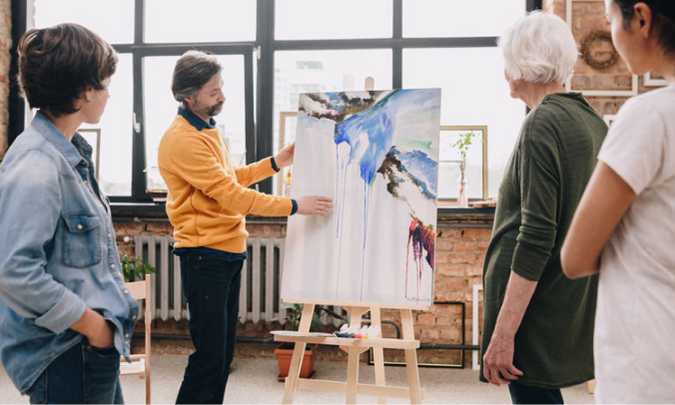
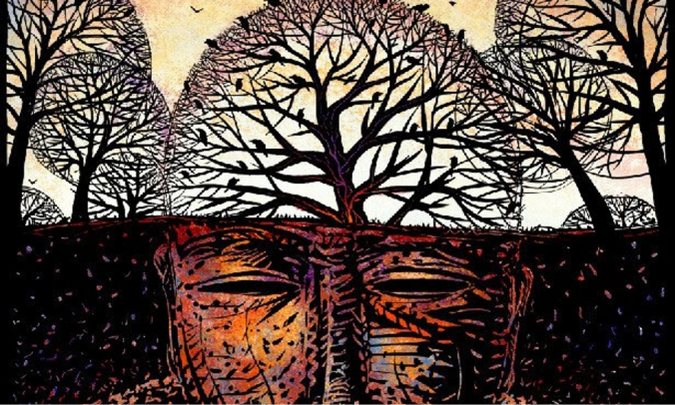
Art criticism and analysis
Art criticism and analysis can deepen understanding and appreciation of different types of art. By examining elements like composition, color, texture, symbolism and historical context, uncover an artwork's deeper meaning and significance. Consider the artist's intentions, the cultural influences and the techniques used to create the work. Explore the emotions evoked, the messages conveyed and the artwork's impact on society and the individual. By engaging in thoughtful analysis can develop a richer understanding of art and its role.
Exposure and exploration
Exposure and exploration are key to understanding diverse art forms. Immersing oneself in the art world through visits to galleries, museums and online platforms can broaden horizons. Discovering artists' biographies, delving into art history, and exploring critical interpretations can deepen understanding. Analysing compositions, techniques, and cultural influences enhances appreciation. Engaging with diverse perspectives, from contemporary installations to ancient sculptures, provides a richer experience. By actively seeking and reflecting on various artistic expressions, a deeper appreciation for the vast and multifaceted world of art can be cultivated.

Art movements
Art movements are periods in art history characterized by a particular style, ideology, or approach to creating art. Examples include:
- Modern art (1860s - 1970s): This era marked a departure from traditional styles, embracing experimentation and new perspectives. Modern artists focused on abstract forms and the changing nature of light, paving the way for contemporary art.
- Cubism (Early 20th century): Pioneered by Picasso and Braque, Cubism revolutionized painting by breaking down subjects into geometric shapes and viewing them from multiple angles simultaneously.
- Impressionism (19th century): This movement captured fleeting moments and the effects of light on everyday subjects. Impressionist painters used small, visible brushstrokes and open compositions.
- Surrealism(Post - World War I): Surrealists sought to unlock the unconscious mind through illogical, dreamlike imagery.They explored the realm of dreams and the irrational, challenging conventional perceptions.
- Contemporary art(Mid - 20th century - Present): Reflecting a globalized and technologically advanced world, contemporary art encompasses a wide range of materials, methods, and themes.It engages with cultural dialogues and addresses complex issues.
- Abstract expressionism(1940s - 1950s): This American movement emphasized spontaneous gestures and emotional expression.Artists like Pollock and de Kooning created large - scale abstract works with bold colors and textures.
- Pop art(1950s - 1960s): Pop artists incorporated imagery from popular culture, such as advertising and comics, into their works.They challenged traditional notions of high art and embraced mass - produced imagery.
- Expressionism(Early 20th century): Expressionist artists prioritized emotional experience over objective reality.They used distorted forms and intense colors to convey inner feelings and anxieties.
- Fauvism(Early 20th century): Fauvist painters, like Matisse and Derain, used vibrant colors and bold brushstrokes to create expressive and non - naturalistic depictions of the world.
- Art Nouveau(Late 19th - Early 20th century): This decorative style featured flowing lines, organic forms, and floral motifs.It was inspired by nature and found expression in architecture, furniture, and graphic design.
- Realism(19th century): Realist artists sought to depict everyday life and ordinary people with accuracy and objectivity.They rejected idealized portrayals and focused on social and political issues.
- Post - Impressionism(Late 19th century): This diverse movement included artists like van Gogh, Cézanne, and Gauguin.They experimented with color, form, and symbolic content, building upon but diverging from Impressionism.
- Conceptual art(1960s - 1970s): Conceptual artists prioritized ideas over the physical art object.They used language, performance, and documentation to explore philosophical and social concepts.
- Neoclassicism(18th - 19th century): Inspired by ancient Greek and Roman art, Neoclassical artists sought to convey order, reason, and moral values through their works.They emphasized clarity, balance, and idealized forms.
- Baroque(17th - 18th century): Baroque art was characterized by dramatic contrasts of light and shadow, elaborate ornamentation, and emotional intensity.It often depicted religious or mythological themes.
- Suprematism(Early 20th century): Founded by Malevich, Suprematism aimed to express pure artistic feeling through geometric abstraction.Its iconic works feature simple shapes like squares and circles on white backgrounds.
- Rococo(18th century): This decorative style was known for its lightheartedness, pastel colors, and playful themes.Rococo art often depicted scenes of love, leisure, and aristocratic life.
- Land art(1960s - 1970s): Land artists created works using natural materials and landscapes, often on a large scale.They sought to connect art with the environment and explore the relationship between humans and nature.
- Performance art(20th century - Present): Performance artists use their bodies and actions as the medium for their art.They often challenge traditional notions of art and engage with social and political issues.
- Op art(1960s): Op artists created optical illusions through geometric patterns and contrasting colors.Their works often appear to vibrate or move, playing with visual perception.
- Neo - Impressionism(Late 19th century): Building on Impressionism, Neo - Impressionist artists like Seurat and Signac used pointillism, a technique of applying small dots of color to create a vibrant image.
- Russian avant - garde(Early 20th century): This broad movement encompassed various styles, including Suprematism and Constructivism.Russian avant - garde artists sought to create a new art for a new society after the Russian Revolution.
- Precisionism(1920s - 1930s): American Precisionist painters focused on industrial subjects, depicting factories, bridges, and urban landscapes with sharp lines and geometric forms.
- Mannerism(16th century): Mannerist artists exaggerated proportions, elongated figures, and employed complex compositions.Their works often had a sense of artificiality and elegance.
- High Renaissance(Late 15th - Early 16th century): This period saw the peak of Renaissance art in Italy, with masters like Leonardo, Michelangelo, and Raphael.Their works showcased idealized forms, balanced compositions, and mastery of perspective.
- Photorealism(1960s - 1970s): Photorealist painters aimed to create incredibly detailed and realistic paintings based on photographs.Their works often depicted everyday scenes and objects with astonishing accuracy.
- Baroque painting(17th - 18th century): Baroque painting was characterized by dramatic lighting, rich colors, and emotional intensity.Artists like Caravaggio and Rembrandt created powerful religious and mythological scenes.
- Neo - expressionism(1970s - 1980s): This international movement saw a return to expressive figuration after the dominance of abstract art.Neo - expressionist artists used bold colors and raw brushstrokes to convey emotional intensity.
- Figurative art(Various periods): This broad term encompasses any art that depicts the human form or other recognizable objects.It includes a wide range of styles and approaches throughout art history.
- Arte Povera(1960s - 1970s): Italian Arte Povera artists used "poor" or everyday materials like dirt, rocks, and rags to create sculptures and installations.They challenged traditional notions of art and value.
- Academic art(19th century): This style of art was taught in European academies and emphasized technical skill, historical accuracy, and idealized forms.It often depicted classical or mythological subjects.
- Japanese art(Various periods): Japanese art encompasses a rich and diverse tradition, including woodblock prints, calligraphy, sculpture, and ceramics.It is known for its elegant forms, subtle colors, and deep connection to nature.
- Naïve art(19th century - Present): Naïve art is created by self - taught artists who lack formal training.It is often characterized by a childlike simplicity, bright colors, and unconventional perspectives.
- Outsider art(20th century - Present): Outsider art is created by individuals outside the mainstream art world, often those with mental illness or disabilities.It is known for its raw emotional power and unique vision.
- Environmental art(1960s - Present): Environmental artists create works that interact with and respond to the natural world.Their works often address ecological concerns and seek to raise awareness about environmental issues.
- Ancient Greek art(8th - 4th centuries BC): Ancient Greek art is celebrated for its idealized sculptures, pottery, and architecture.It laid the foundation for Western artistic traditions and continues to inspire artists today.
- Social realism(20th century): Social realist artists depicted the struggles and realities of working - class people.They often had a political agenda and sought to expose social injustices.
- Classical Realism(20th century - Present): Classical Realism is a modern movement that emphasizes technical skill and traditional methods of painting and sculpture.Artists often draw inspiration from classical antiquity.
- Tonalism(Late 19th century): Tonalist painters created atmospheric landscapes with muted colors and a sense of mystery.They were influenced by Romanticism and sought to evoke mood and emotion.
- Hyperrealism(1960s - Present): Hyperrealist artists create highly detailed paintings and sculptures that are often indistinguishable from photographs.Their works push the boundaries of realism and challenge notions of perception.
- Byzantine art(4th - 15th centuries): Byzantine art, characterized by its religious iconography, mosaics, and illuminated manuscripts, flourished in the Eastern Roman Empire.It had a profound influence on medieval art.
- Romanesque art(11th - 12th centuries): Romanesque art, known for its rounded arches, thick walls, and religious themes, emerged in Europe following the decline of the Roman Empire.It paved the way for Gothic art.

Art styles
Different styles within art movements can vary widely and may overlap with each other. Some common styles include:
- Realism: This style seeks to accurately portray the world as it appears, often focusing on everyday subjects and events. Realist artists strive for detail and believability in their work.
- Abstract: This style departs from realistic representation, instead using shapes, colors, and forms to express emotions, ideas, or simply the beauty of the visual elements themselves.
- Expressionism: Artists in this style prioritize the conveyance of inner emotions and feelings over realistic depiction. They use bold colors, distorted forms, and vigorous brushstrokes to create impactful works.
- Minimalism: This style embraces simplicity and the use of minimal elements. Minimalist art often features geometric shapes, limited color palettes, and an emphasis on clean lines and uncluttered compositions.
- Pop Art: Drawing inspiration from popular culture and mass media, Pop Art often incorporates recognizable imagery from advertising, comics, and everyday objects. It celebrates the mundane and challenges traditional notions of high art.
- Surrealism: This style delves into the dreamlike and the unconscious mind. Surrealist artists create bizarre and often illogical scenes that defy rational explanation, inviting viewers to explore the depths of imagination.
- Impressionism: Capturing fleeting moments and the effects of light, Impressionist artists used short, visible brushstrokes and open compositions. Their focus was on capturing the sensory experience of the world around them.
- Cubism: This revolutionary style fractured and reassembled objects into geometric shapes, often presenting multiple viewpoints simultaneously. Cubist artists aimed to depict the essence of their subjects rather than their outward appearance.
- Symbolism: Symbolist artists believed that art should convey deeper meaning beyond the literal. They often used symbols, metaphors, and allusions to evoke emotions and explore spiritual and philosophical themes.
- Art Deco: This decorative style emerged in the 1920s and 1930s, characterized by geometric shapes, streamlined forms, and luxurious materials.

Art techniques
Artists employ various techniques to create their work, including:
- Painting: Painting is a versatile and expressive medium that allows artists to capture moments in time, emotions and ideas by applying colours to a variety of surfaces. From the delicate brushstrokes of watercolor to the thick impasto of oil paint, artists utilize different techniques to achieve diverse textures, colors and effects. The history of painting is rich and varied, spanning cultures and centuries and continues to evolve as artists explore new materials and technologies.
- Drawing: A fundamental art form using lines and marks to depict objects, figures or abstract concepts. Artists employ various tools like pencils, charcoal, ink and pastels on surfaces such as paper or canvas. Drawing can be both a preparatory stage for other works or a complete artwork in itself.
- Sculpture: The creation of three-dimensional artworks by shaping, carving, modelling, or assembling materials like clay, wood, metal, stone, or found objects. Sculptors explore form, texture, and space, often creating works that interact with the viewer and their environment.
- Printmaking: A process of creating multiple copies of an image through various techniques. Artists carve, etch, or draw onto a matrix (wood, metal, stone), which is then inked and pressed onto paper or another surface. Printmaking enables the reproduction of artworks, making them more accessible to a wider audience.
- Photography: The art of capturing images using a camera to record light onto light-sensitive materials or digital sensors. Photographers manipulate composition, exposure, and lighting to create visually compelling and meaningful images. Photography serves as both a form of artistic expression and a tool for documenting the world.
- Collage: The technique of assembling different materials, such as paper, fabric, photographs, and found objects, onto a surface. Collage artists explore texture, color, and juxtaposition to create unique and often surprising visual compositions.
- Mosaic: The creation of images or patterns by arranging small, colored pieces of glass, stone, or other materials onto a surface. Mosaics are often used to decorate walls, floors, or ceilings and can depict intricate scenes or geometric designs.
- Textile Arts: The use of fibers, yarn, fabric, and other textile materials to create artworks. Textile artists employ techniques like weaving, knitting, embroidery, and quilting to produce both functional and decorative objects.
- Digital Art: The creation of art using digital tools and software, including drawing tablets, graphic design programs, and 3D modeling software. Digital artists create a wide range of works, from illustrations and animations to virtual reality experiences.
- Mixed Media: The combination of various art techniques and materials within a single artwork. This approach allows for a wide range of creative expression, often resulting in layered and multi-dimensional pieces.
- Performance Art: Live actions or events presented as art. Performance artists use their bodies, voices, and the surrounding space to create temporary artworks that challenge traditional notions of art and engage the audience in a unique way.
- Installation Art: The creation of large-scale, site-specific artworks that transform a particular space. Installations can involve various materials and incorporate elements of sculpture, sound, light, and video, creating immersive environments for the viewer.
- Land Art: Creating artworks using natural materials found in the landscape, often on a large scale. Land artists manipulate the environment, creating temporary or permanent pieces that interact with and respond to the natural world.
- Graffiti: A form of street art created by painting or spraying images, words, or symbols onto public surfaces. Graffiti artists often work anonymously and their creations can range from simple tags to elaborate murals.
- Conceptual Art: Prioritizing the idea or concept behind an artwork over its physical form. Conceptual artists may use language, text, instructions, or actions to convey their ideas, challenging traditional notions of what constitutes art.
- Video Art: The use of video technology to create artworks. Video artists may use original footage, found footage, or a combination of both to explore a wide range of themes and concepts. Video art can be presented in galleries, museums, or online platforms.

Art mediums
Different mediums refer to the materials artists use to create their work. Some common mediums include:
- Oil paint: A versatile medium made from pigments mixed with oil, often linseed oil. It offers rich colors, slow drying time for blending and allows for a variety of techniques like glazing and impasto. Oil paint has been a popular choice for artists for centuries, renowned for its ability to create luminous and textured effects.
- Acrylic paint: A fast-drying, water-based paint made from pigments mixed with acrylic polymer. It's known for its versatility, allowing for thin washes or thick applications and can be used on various surfaces. Acrylic paints are a popular choice for both professional artists and hobbyists due to their ease of use and affordability.
- Watercolor: A transparent medium made from pigments mixed with water, often used on paper. Watercolor paintings are known for their luminous quality and ability to capture delicate details and washes of color. Watercolor's fluidity and transparency allow for unique effects like blending and layering.
- Tempera: An ancient medium made from pigments mixed with egg yolk, known for its durability and matte finish. It was widely used for panel paintings and frescoes before the advent of oil paint. Tempera paintings often have a rich, jewel-like quality due to the egg yolk binder.
- Gouache: An opaque watercolor paint made from pigments mixed with a binder and white pigment. It offers both opacity and transparency, allowing for a wide range of effects. Gouache is often used for illustrations, design work, and paintings that require vibrant, flat colors.
- Pastel: Pigmented sticks made from powdered pigment and a binder, available in soft, hard, and oil pastel varieties. Pastels offer vibrant colors and can be blended for subtle effects. They are known for their soft, velvety texture and ability to create both delicate and bold marks.
- Charcoal: A drawing medium made from burnt wood or other organic materials. Charcoal produces deep blacks and a range of grays and is ideal for sketches, studies, and finished drawings. Charcoal drawings are often characterized by their expressive and spontaneous qualities.
- Graphite: A soft, black mineral used for drawing and sketching. Graphite pencils offer a range of hardness grades, allowing for fine lines or broad strokes. Graphite is versatile and widely used for both detailed drawings and quick sketches.
- Ink: A liquid or paste medium made from pigments or dyes, used for drawing, calligraphy, and printmaking. Ink offers a variety of colors and can be used with pens, brushes, or other tools. Ink drawings can be both delicate and bold, with a wide range of line quality and expressive potential.
- Clay: A natural earth material used for sculpting, pottery, and ceramics. Clay can be shaped, fired in a kiln to harden, and glazed for decorative effects. Clay is a malleable and versatile medium, allowing for a wide range of sculptural and functional forms.
- Marble: A metamorphic rock often used for sculptures and architectural elements. Marble is prized for its beauty, durability, and translucence. Marble sculptures can be highly polished, revealing intricate details and veins of color.
- Bronze: An alloy of copper and tin, used for casting sculptures. Bronze is valued for its strength, ability to capture fine details, and its characteristic patina, which develops over time. Bronze sculptures can be monumental or small-scale, and are often used for public monuments and memorials.
- Wood: A versatile natural material used for carving, construction, and woodworking. Different types of wood offer unique textures, colors, and grain patterns. Wood sculptures can range from intricate carvings to large-scale installations, each showcasing the natural beauty of the material.
- Metal: Various metals like steel, aluminum, and copper are used for sculptures, installations, and jewelry. Metal offers strength, durability, and a range of finishes, from polished to patinated. Metal sculptures can be abstract or figurative, and can take on a variety of forms and textures.
- Glass: A transparent or translucent material made from silica, often used for decorative objects, sculptures, and architectural elements. Glass can be blown, cast, or fused into various shapes and colors, allowing for endless creative possibilities. Glass sculptures can be delicate and ethereal or bold and colorful, playing with light and shadow to create stunning visual effects.
- Found Objects: Everyday objects repurposed for artistic use. Found objects add texture, interest, and unexpected elements to artworks, inviting viewers to reconsider the value and meaning of ordinary things.
- Digital Media: Software programs and digital tools like drawing tablets, computers, and 3D printers used to create art. Digital media offers limitless possibilities for artistic expression and experimentation, allowing artists to create interactive experiences, animations, and virtual realities. Digital art is constantly evolving as new technologies emerge.

Art criticism and analysis
Art criticism and analysis can deepen understanding and appreciation of different types of art. By examining elements like composition, color, texture, symbolism and historical context, uncover an artwork's deeper meaning and significance. Consider the artist's intentions, the cultural influences and the techniques used to create the work. Explore the emotions evoked, the messages conveyed and the artwork's impact on society and the individual. By engaging in thoughtful analysis can develop a richer understanding of art and its role.

Exposure and exploration
Exposure and exploration are key to understanding diverse art forms. Immersing oneself in the art world through visits to galleries, museums and online platforms can broaden horizons. Discovering artists' biographies, delving into art history, and exploring critical interpretations can deepen understanding. Analysing compositions, techniques, and cultural influences enhances appreciation. Engaging with diverse perspectives, from contemporary installations to ancient sculptures, provides a richer experience. By actively seeking and reflecting on various artistic expressions, a deeper appreciation for the vast and multifaceted world of art can be cultivated.
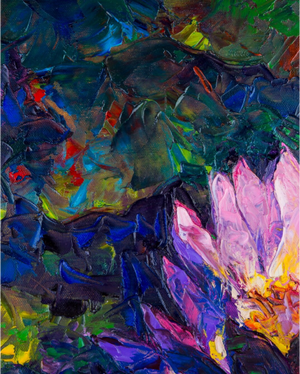
Different types of paintings mediums
Throughout history, artists have adapted their painting styles and materials to evolving technology and tastes. The array of paints available continues to expand, raising the question: which is best? Beyond watercolor, oil, and acrylic, countless options await exploration.
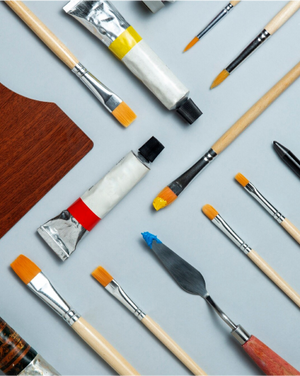
Art tools and materials for drawing & painting
Choosing the right art tools and materials is like having a superpower in your artistic journey. Whether you’re drawing or painting, having the right stuff at your fingertips is key. It’s all about finding what works best for you and your creative vision.
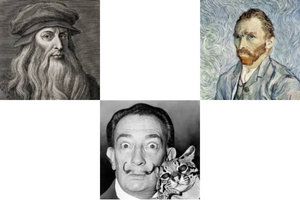
The most famous artists of all time
In mediums ranging from painting to sculpture, the most celebrated artists across the ages have forged enduring masterpieces that stand as the epitome of artistic achievement, leaving an indelible mark on the canvas of art history.



